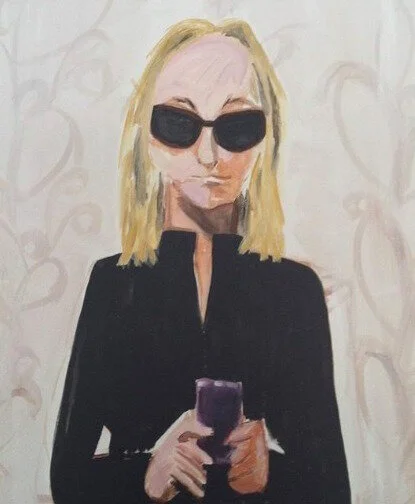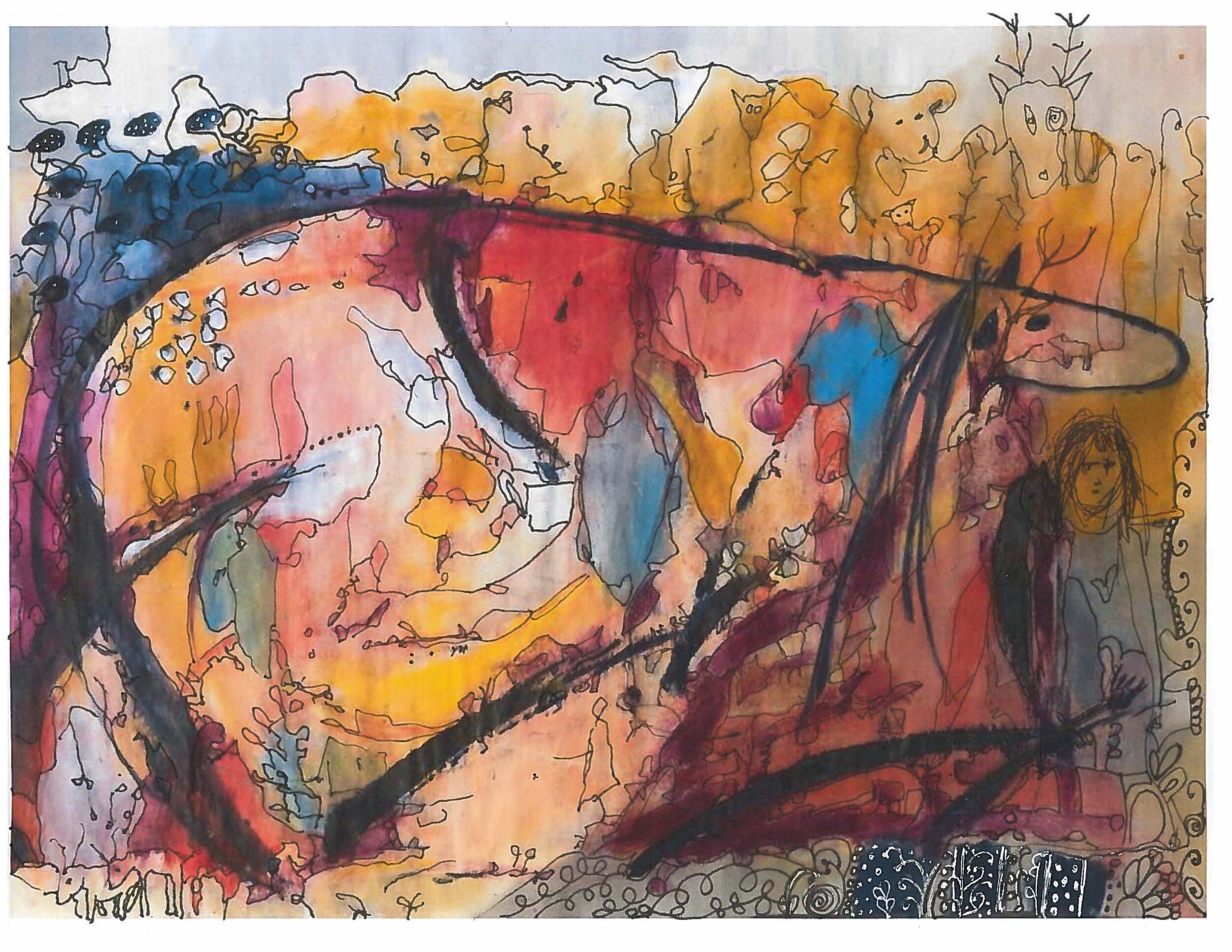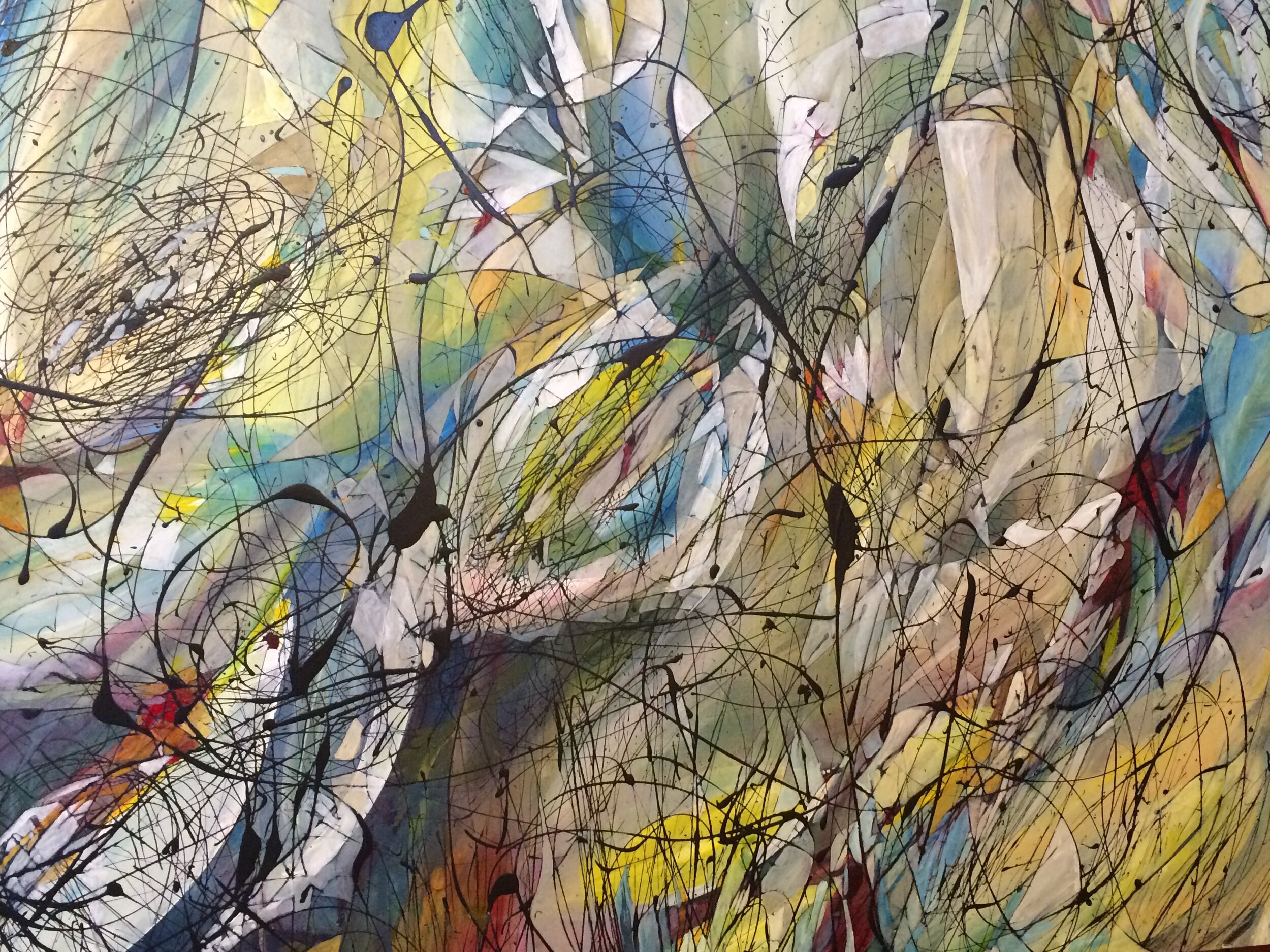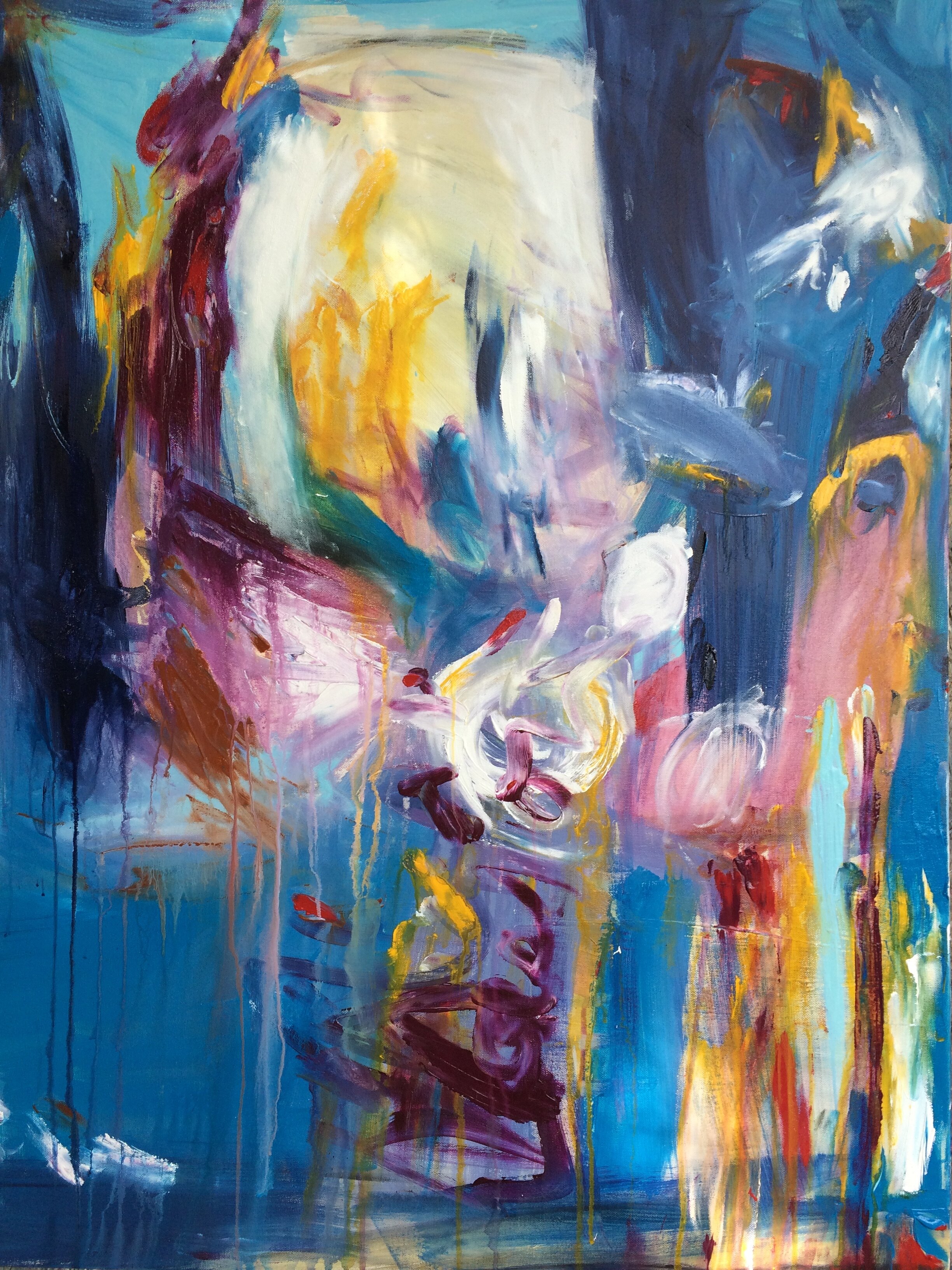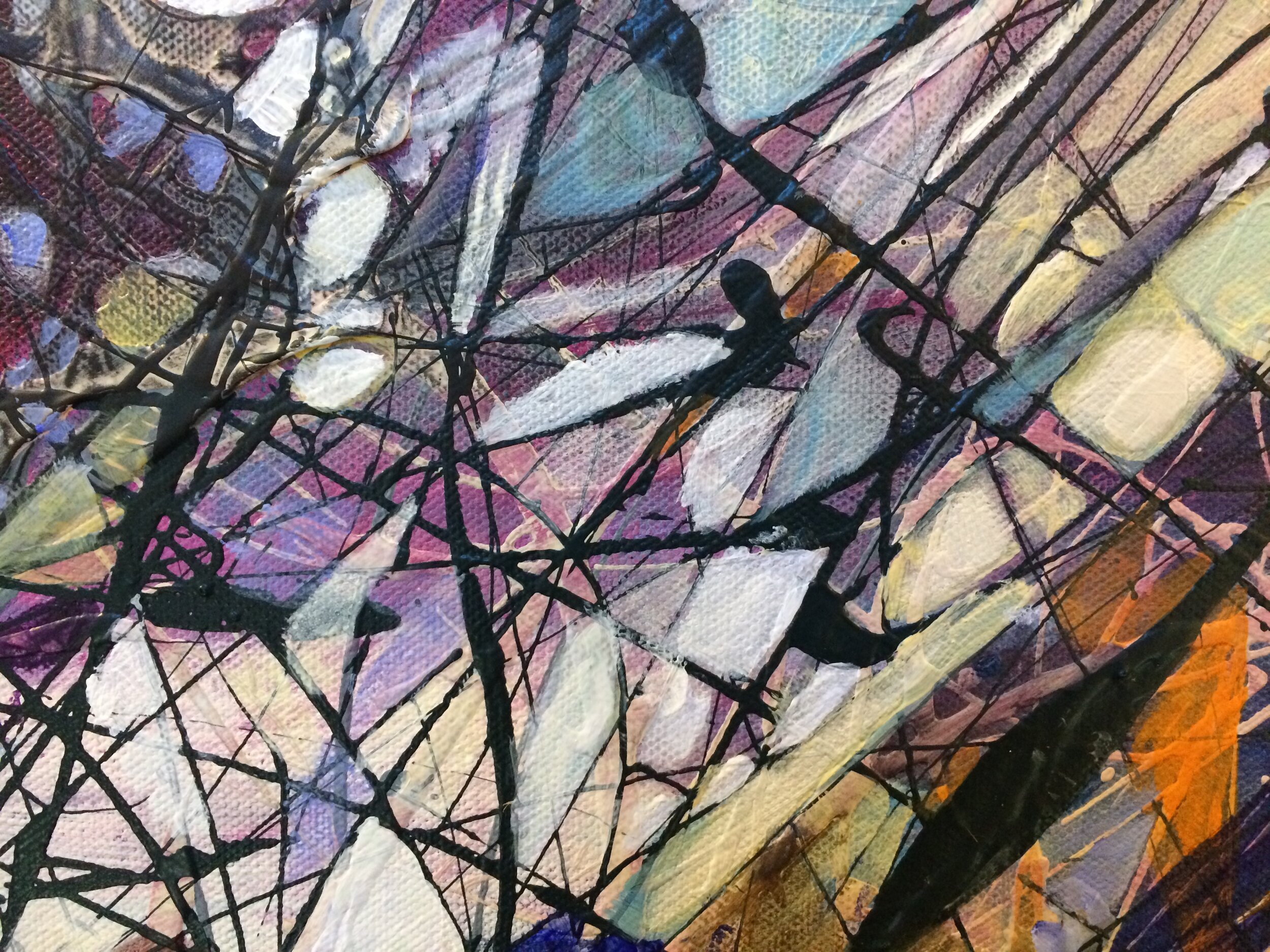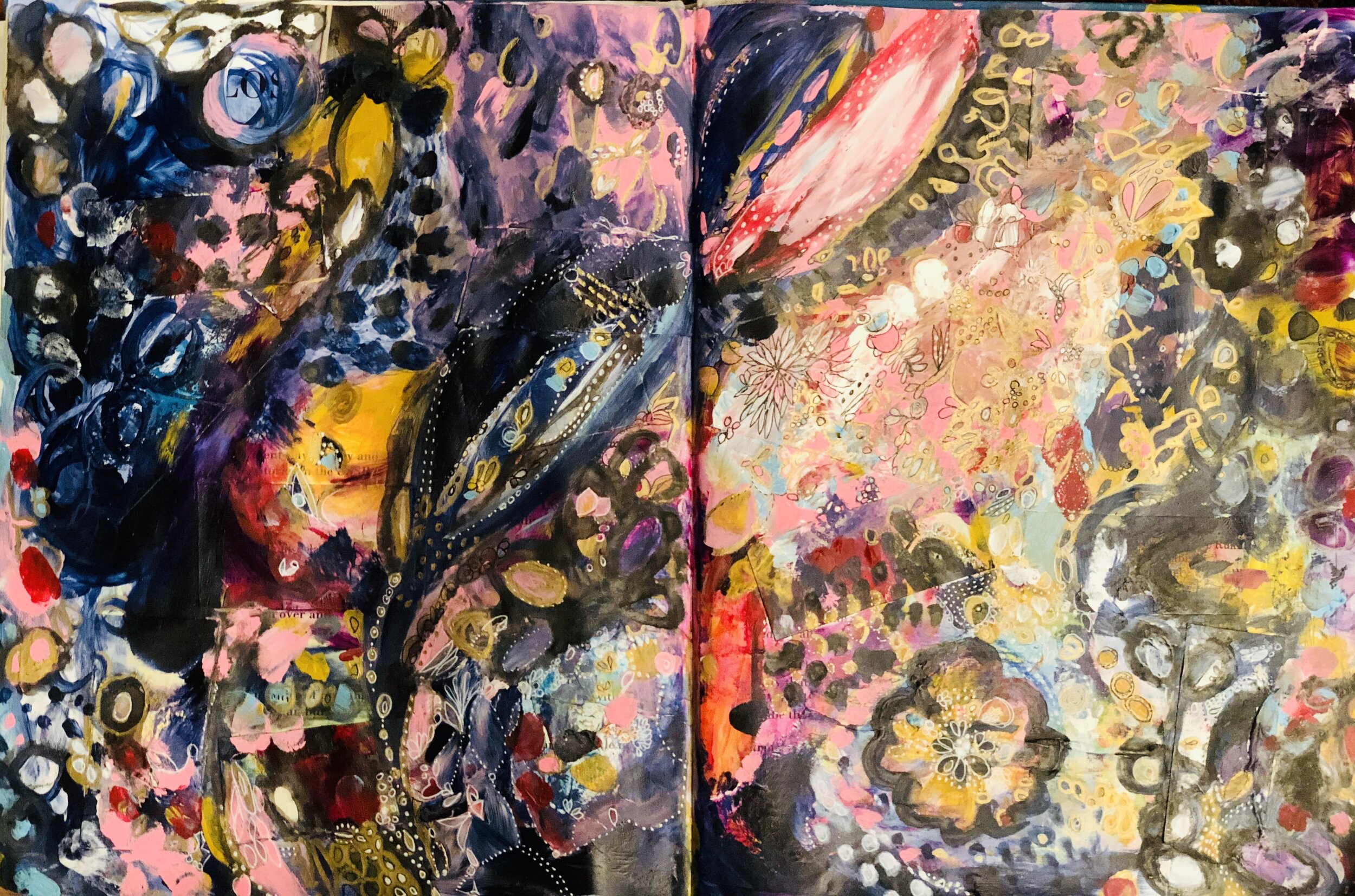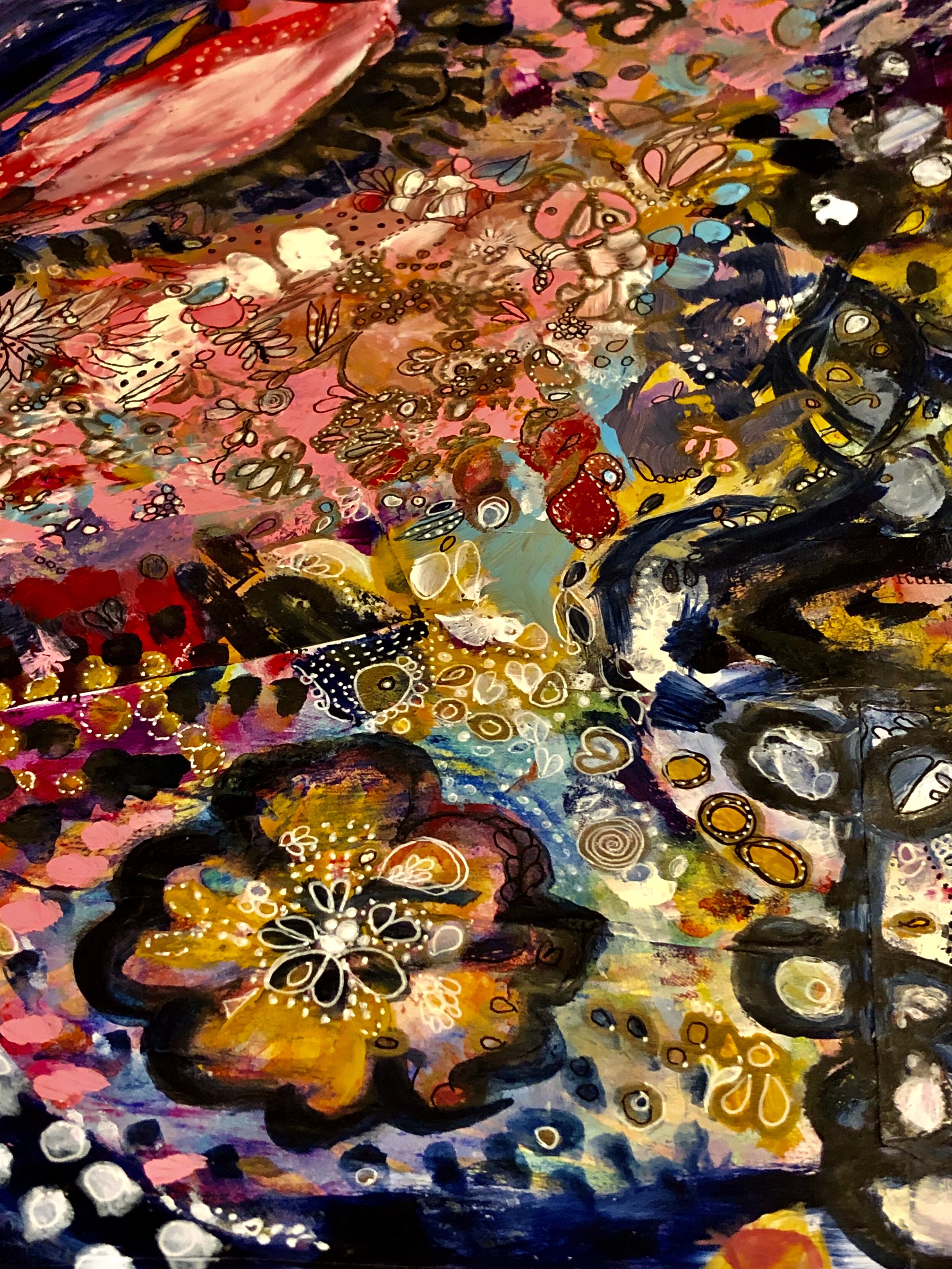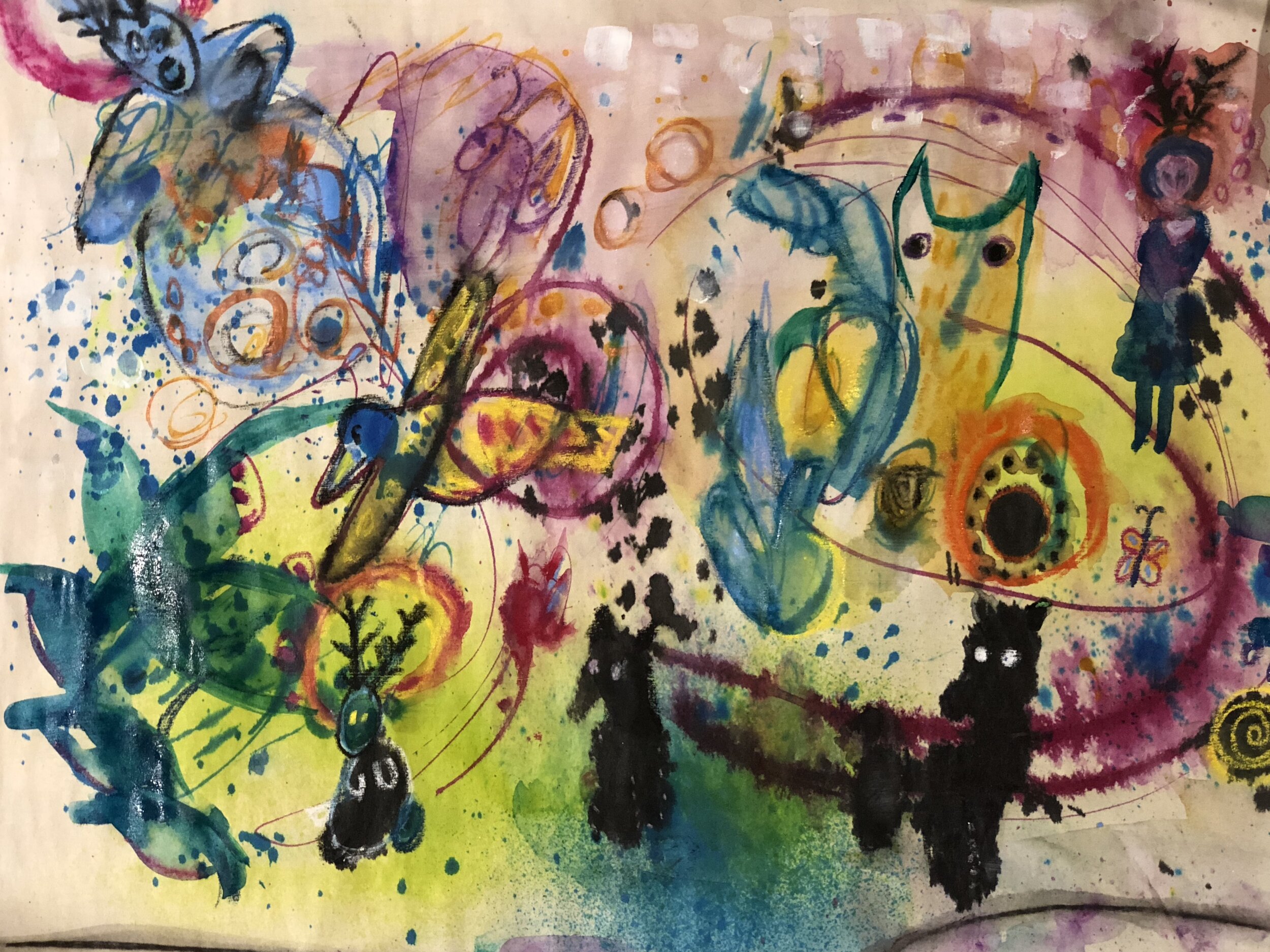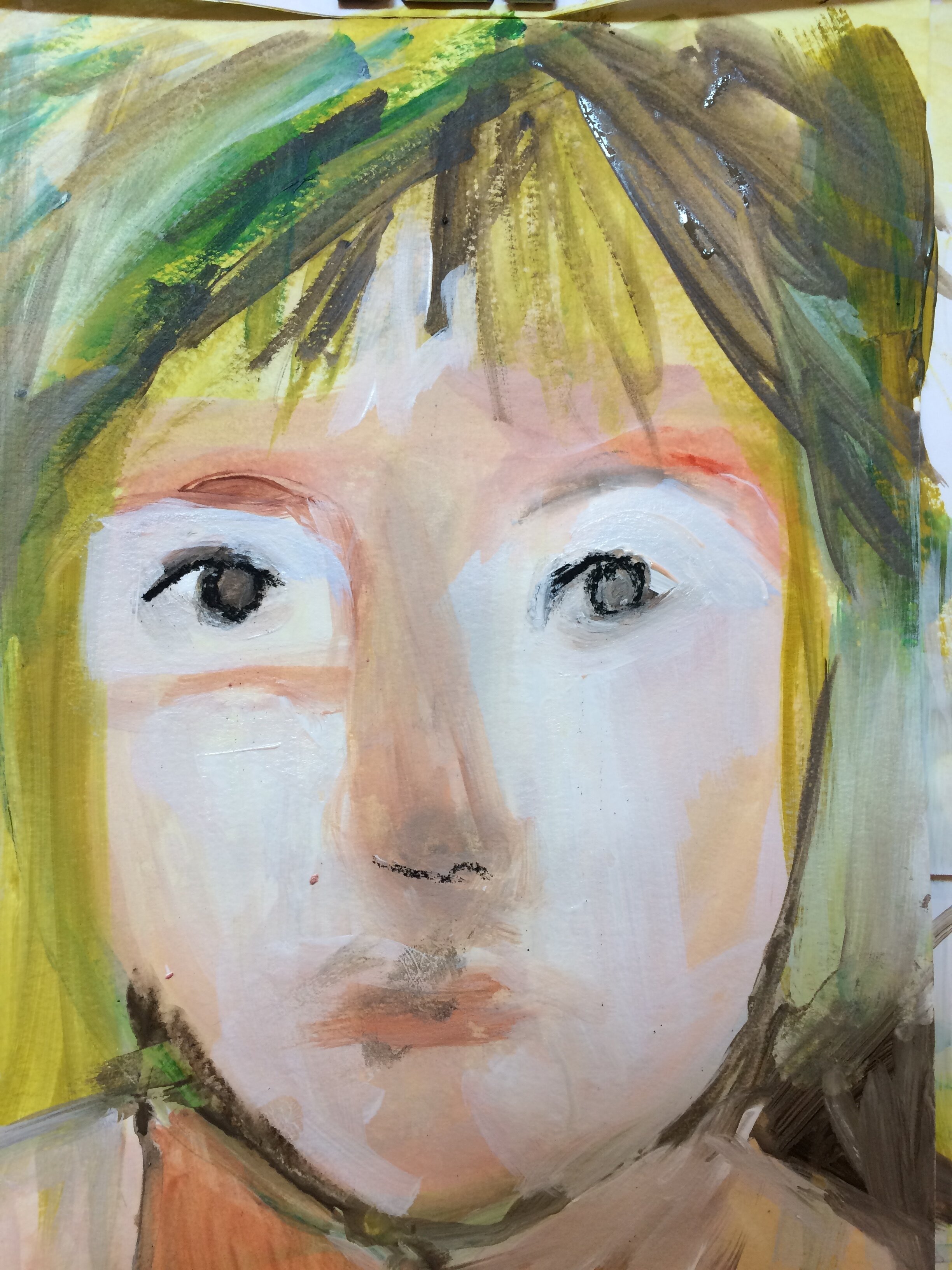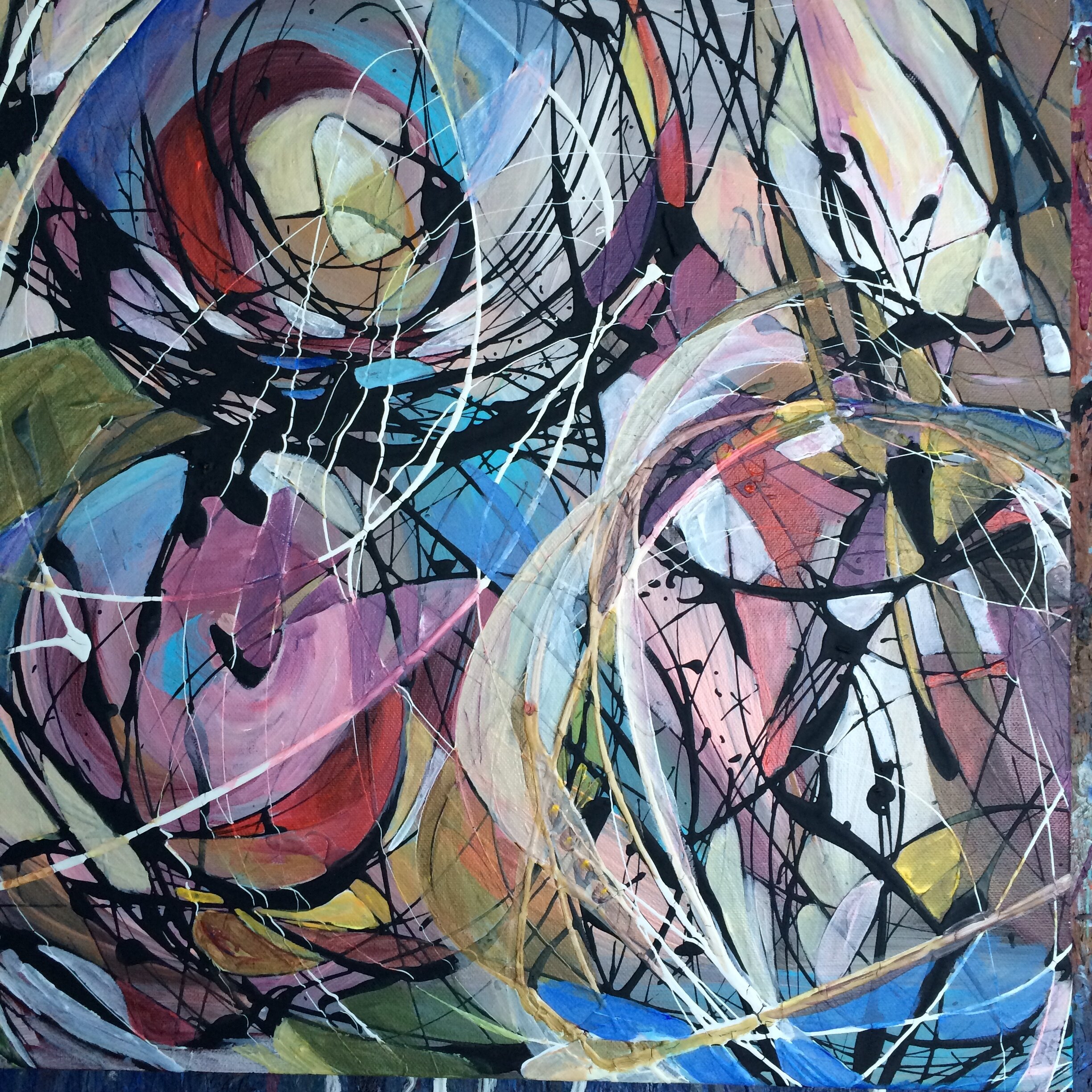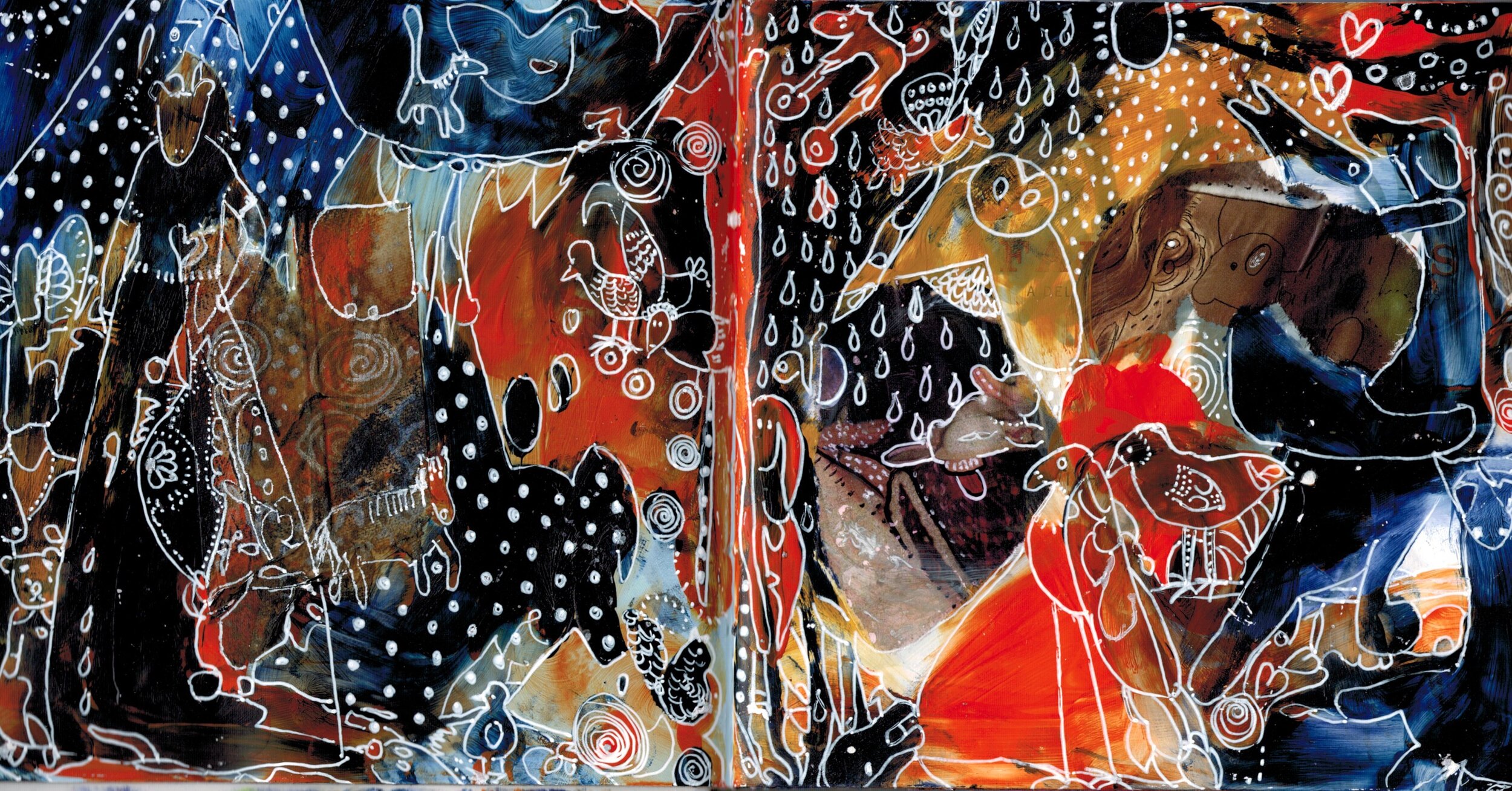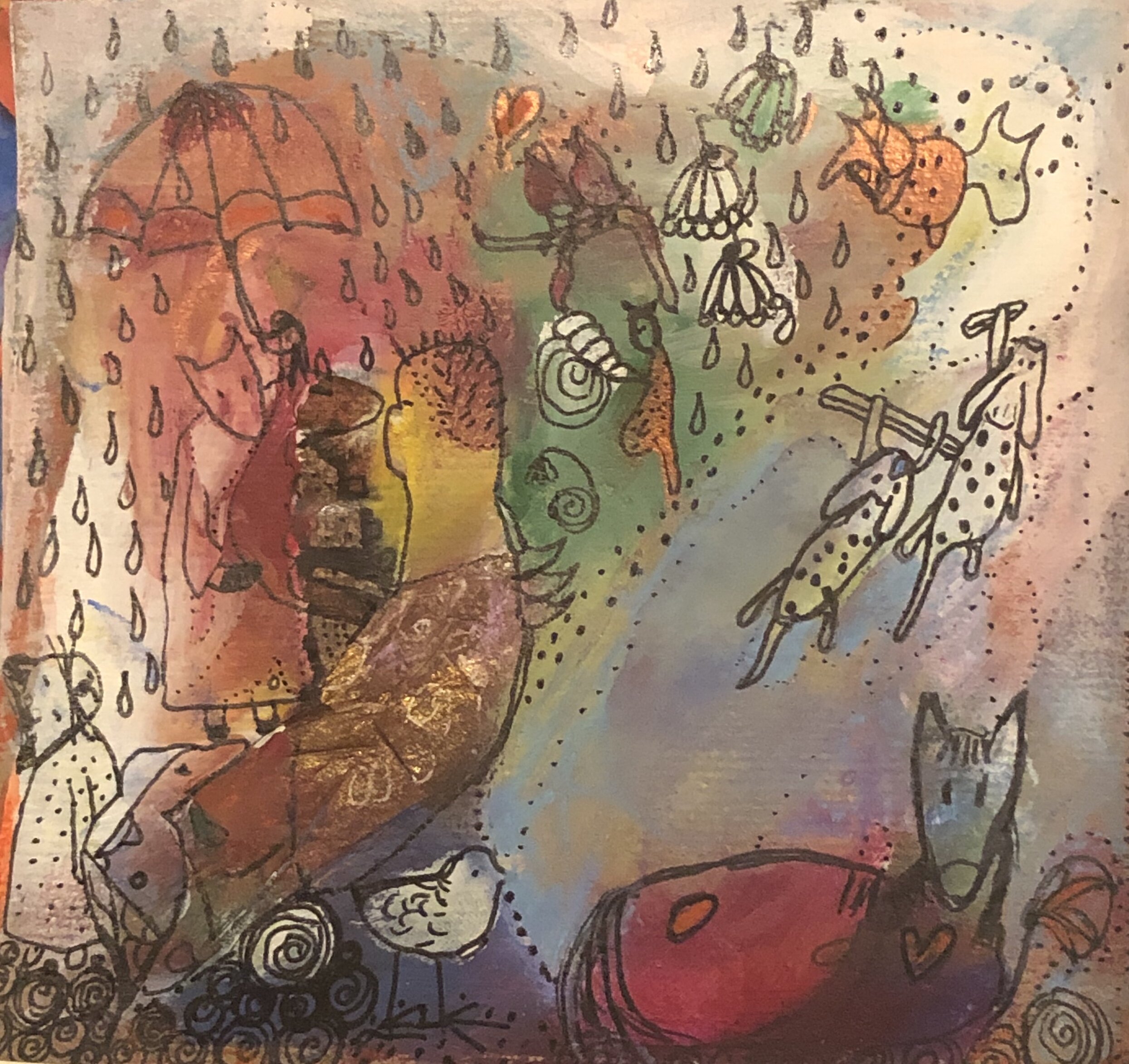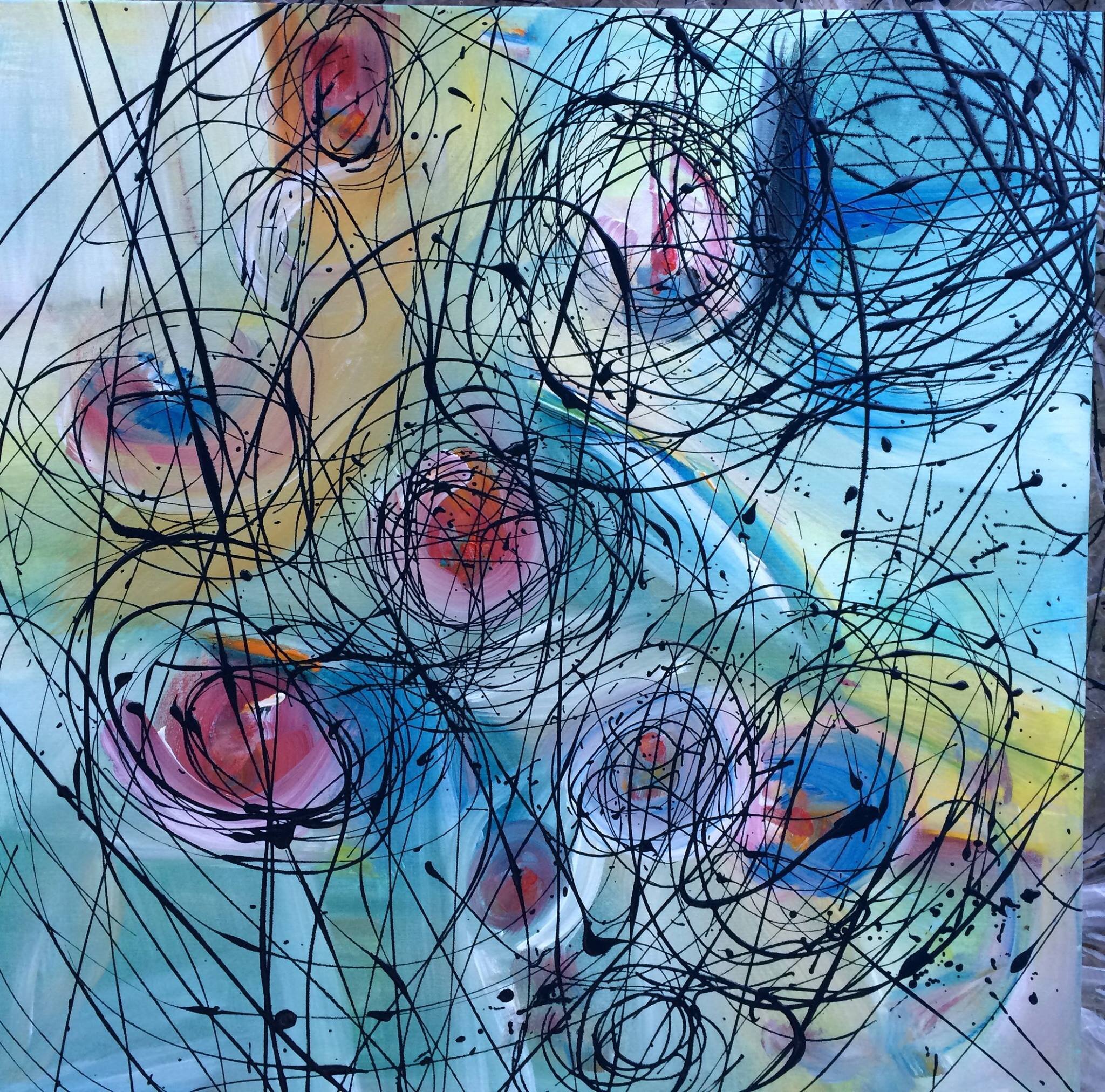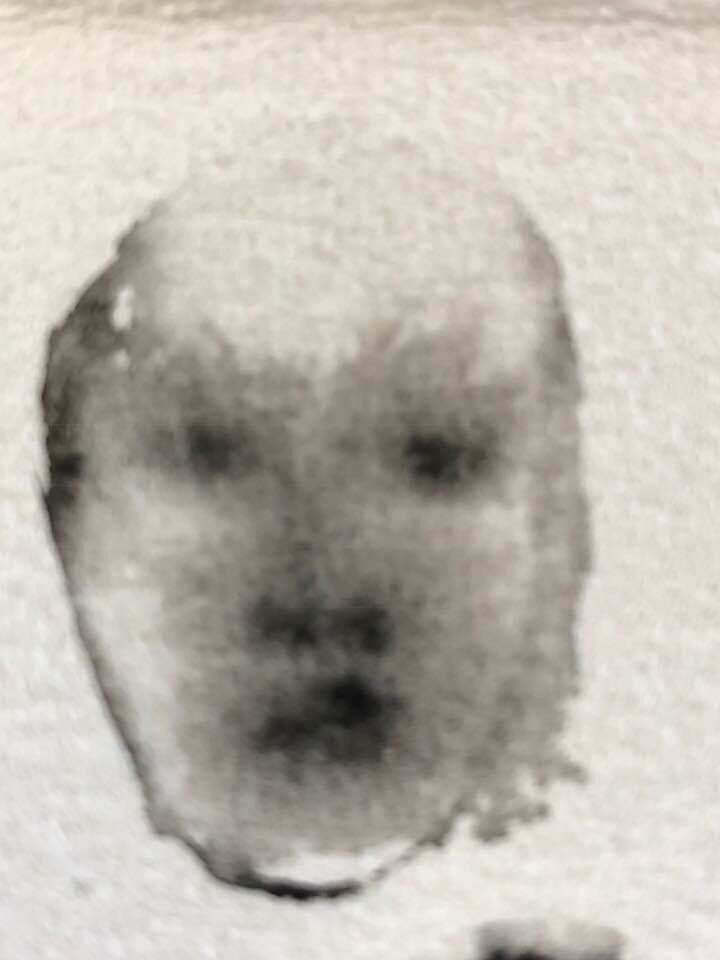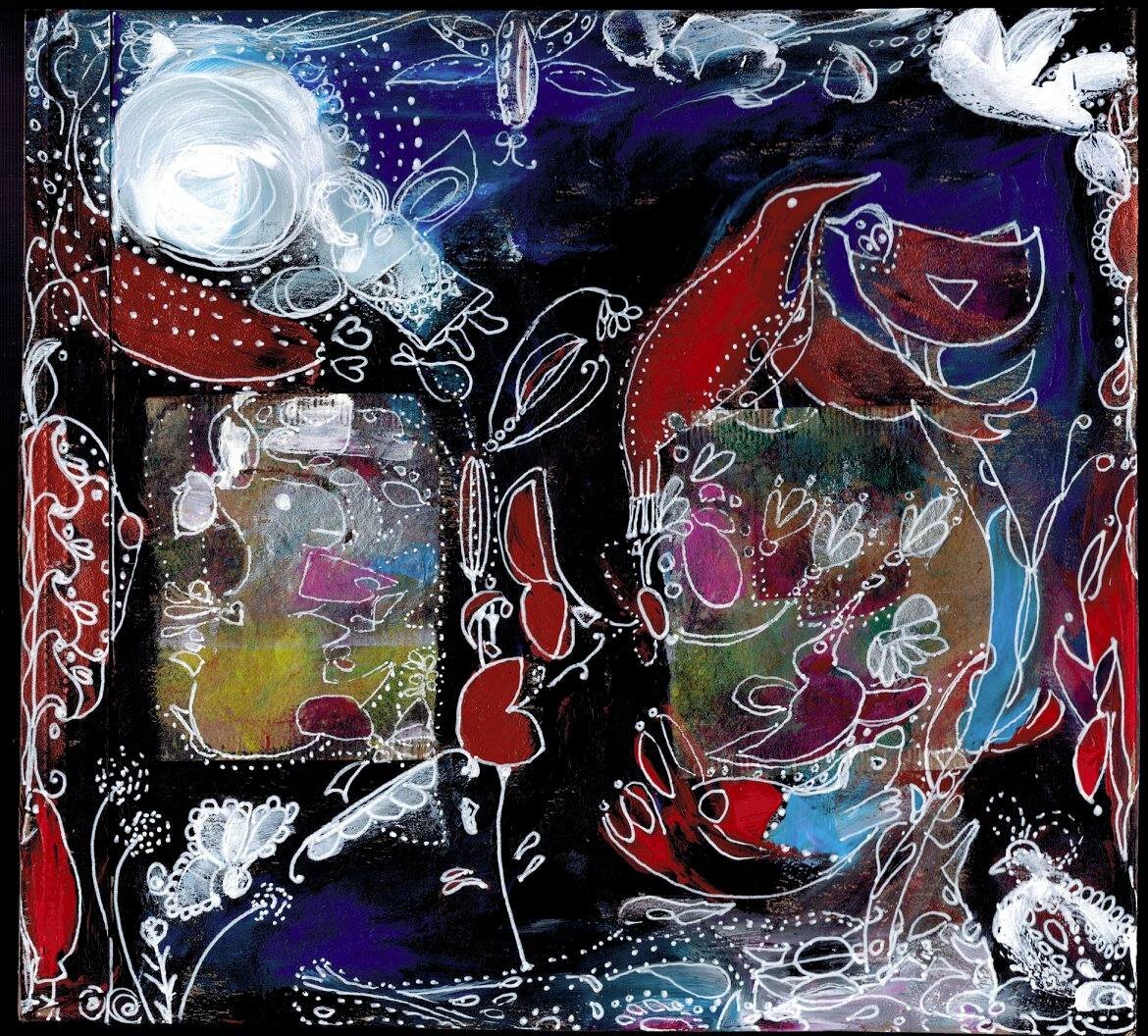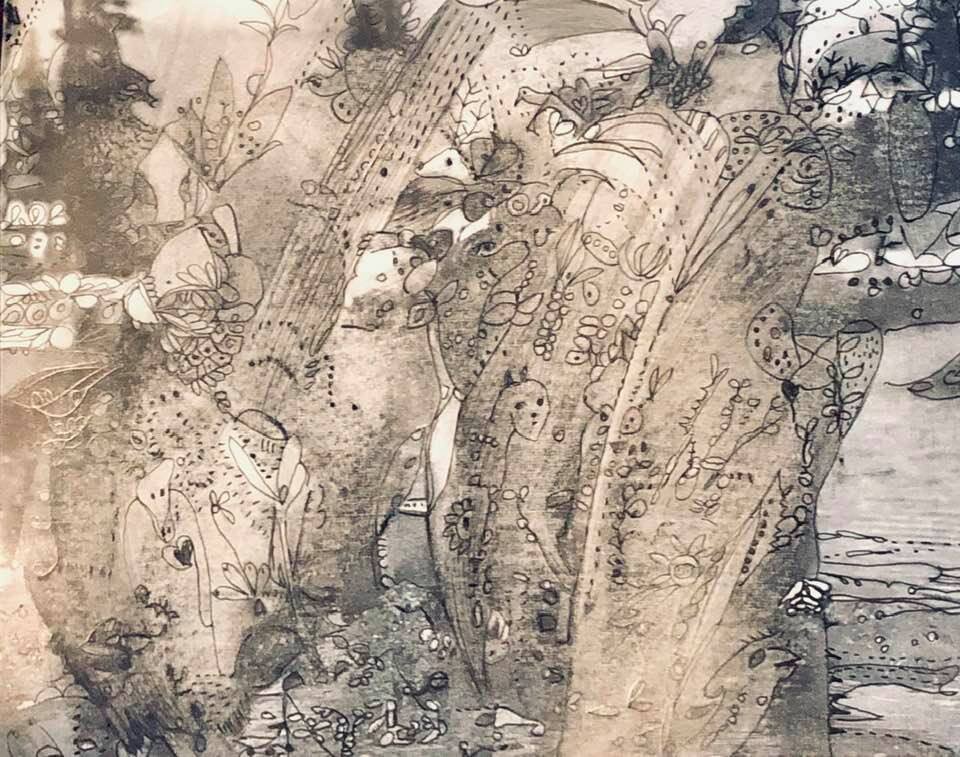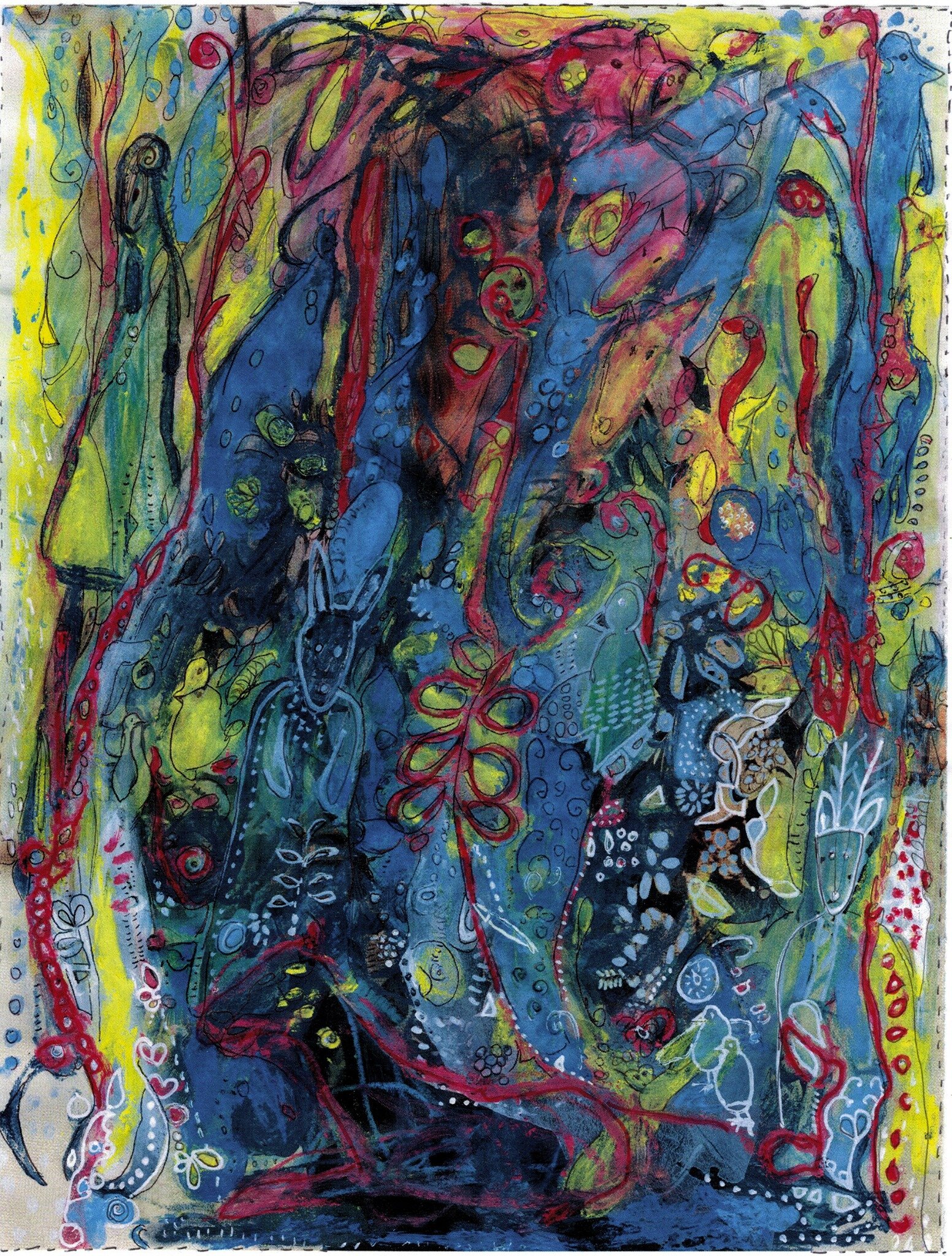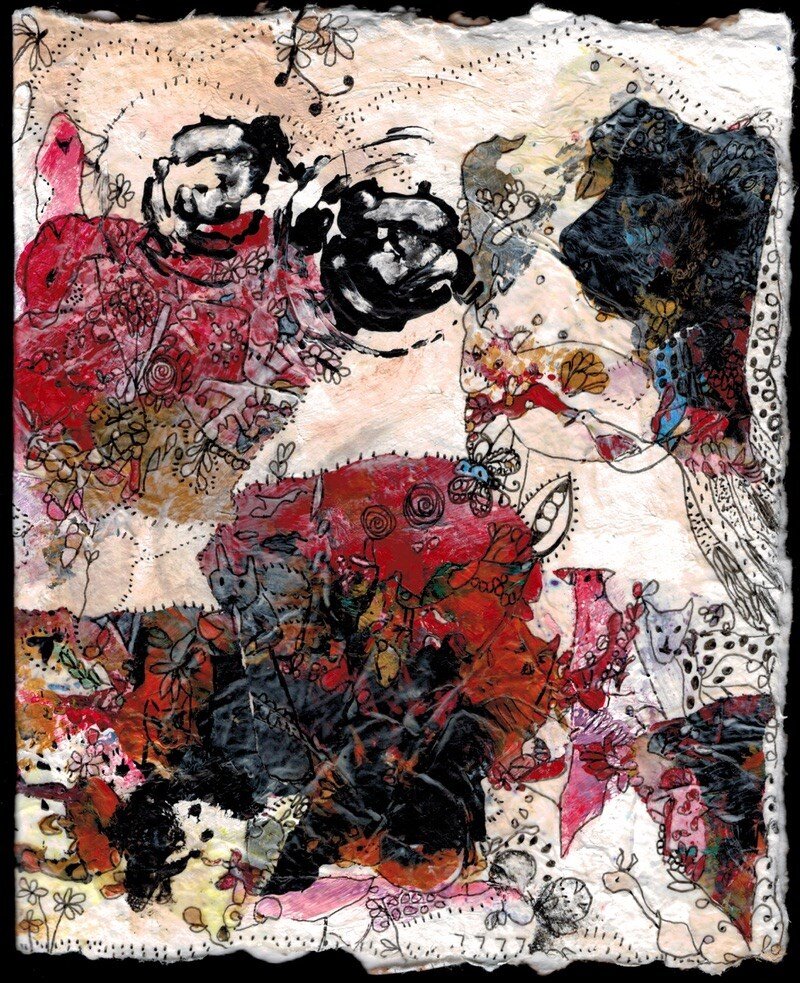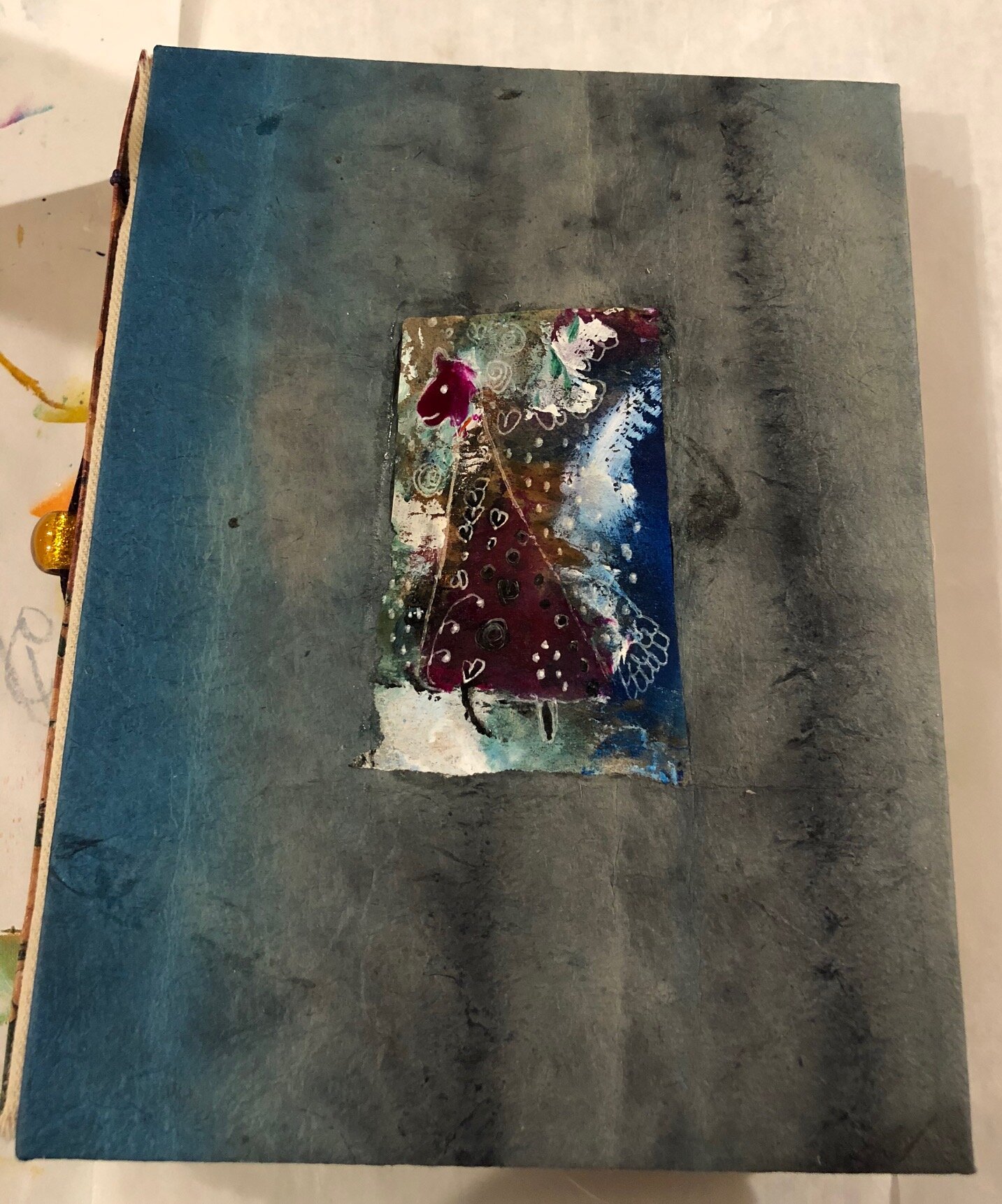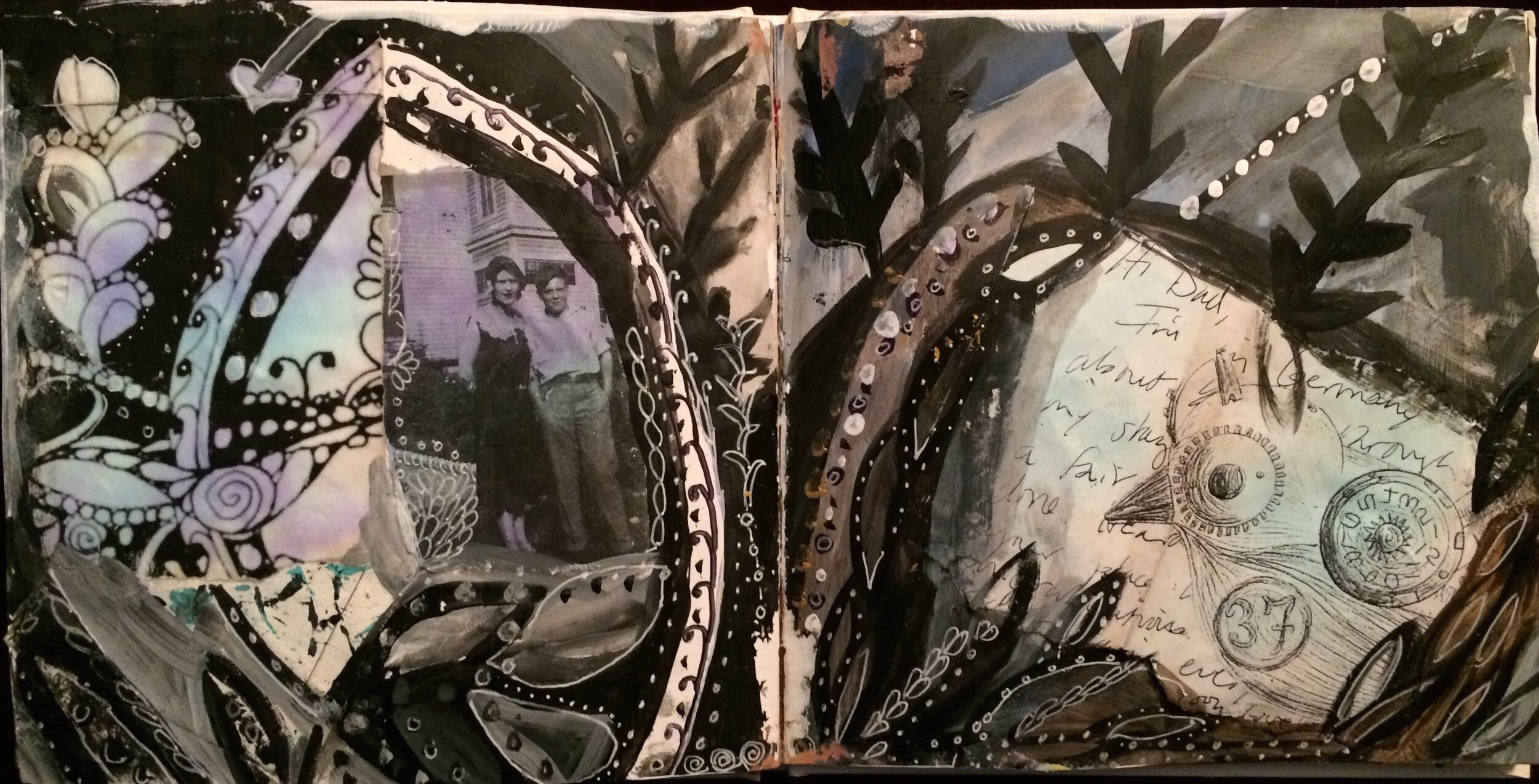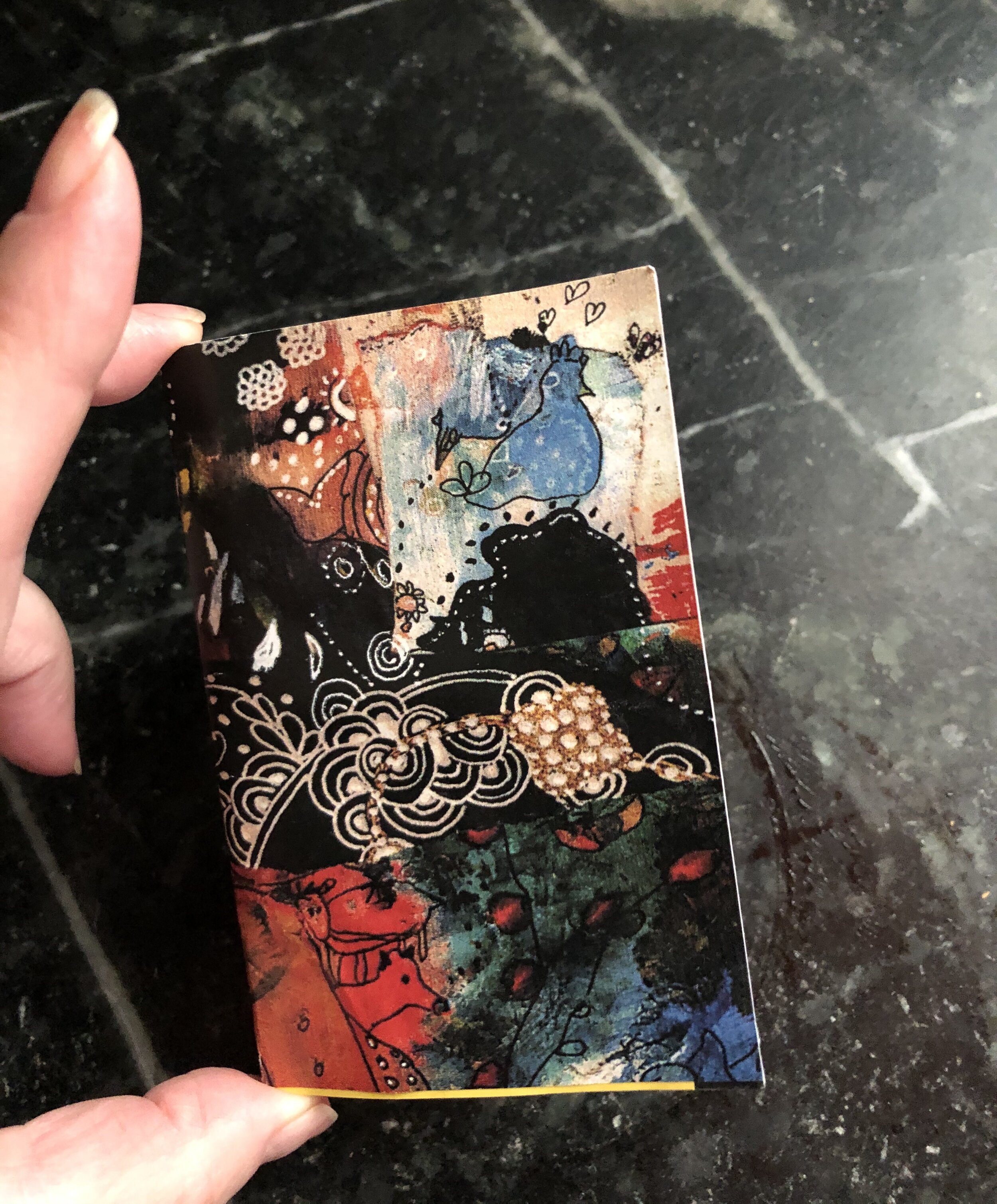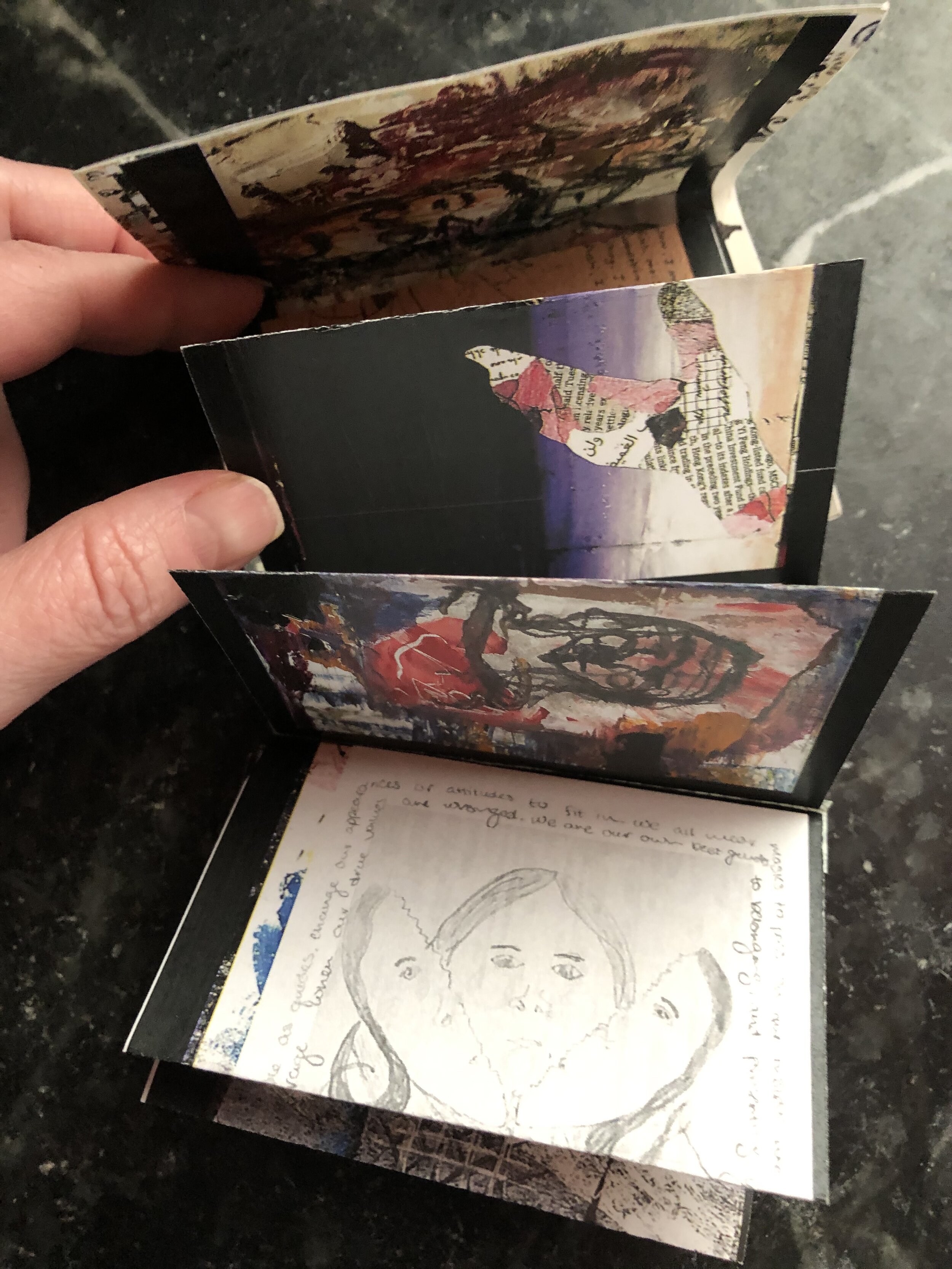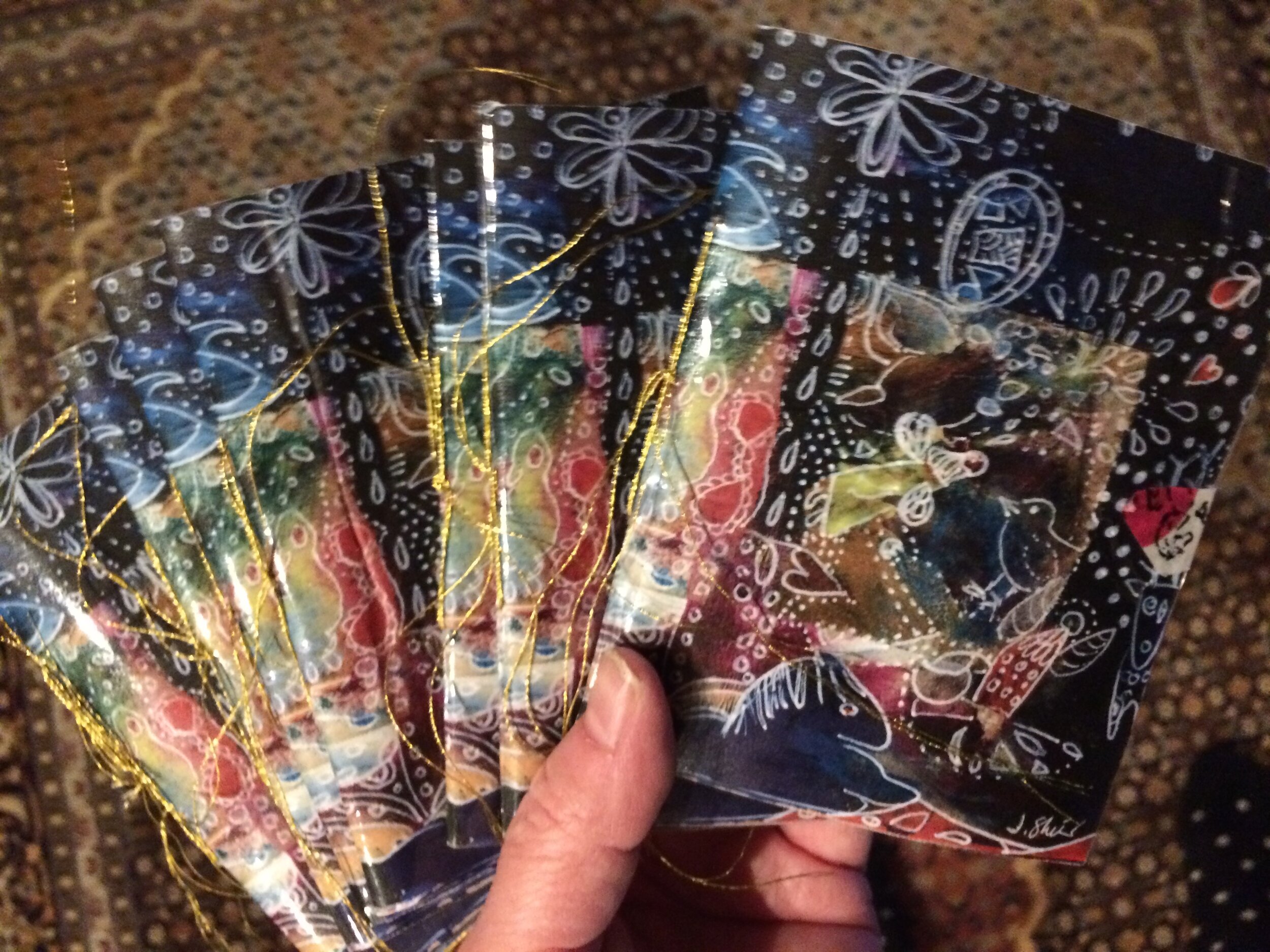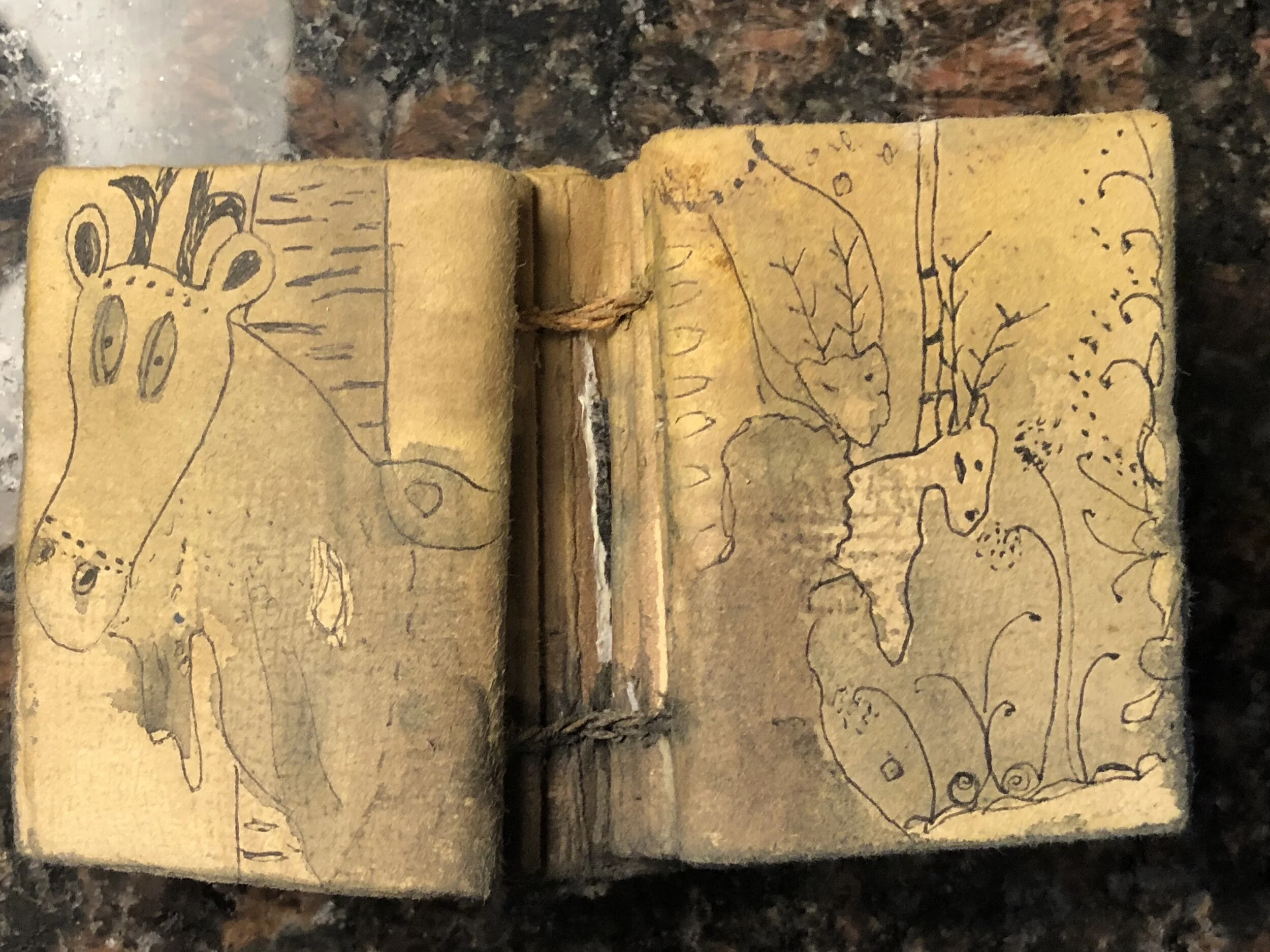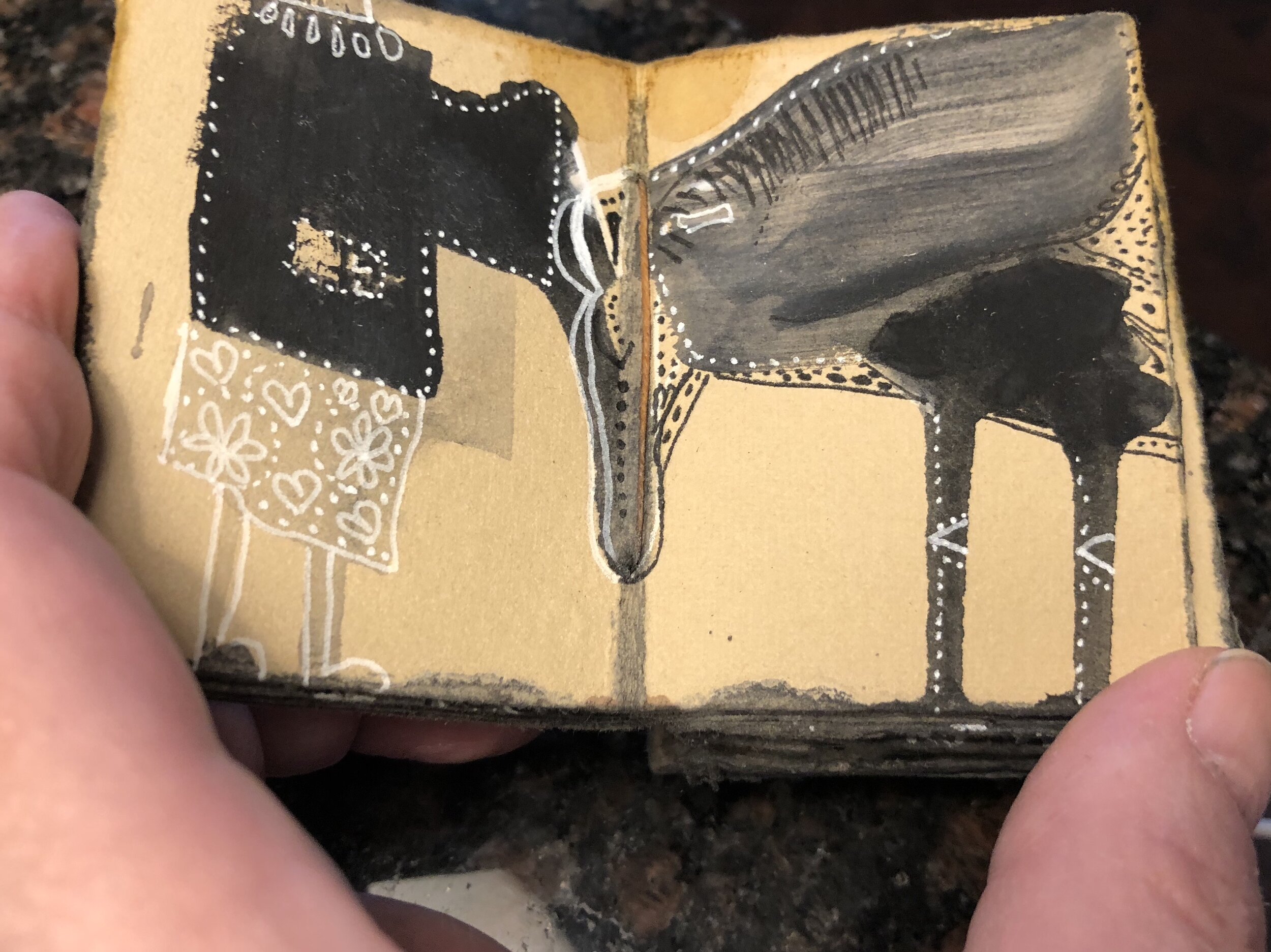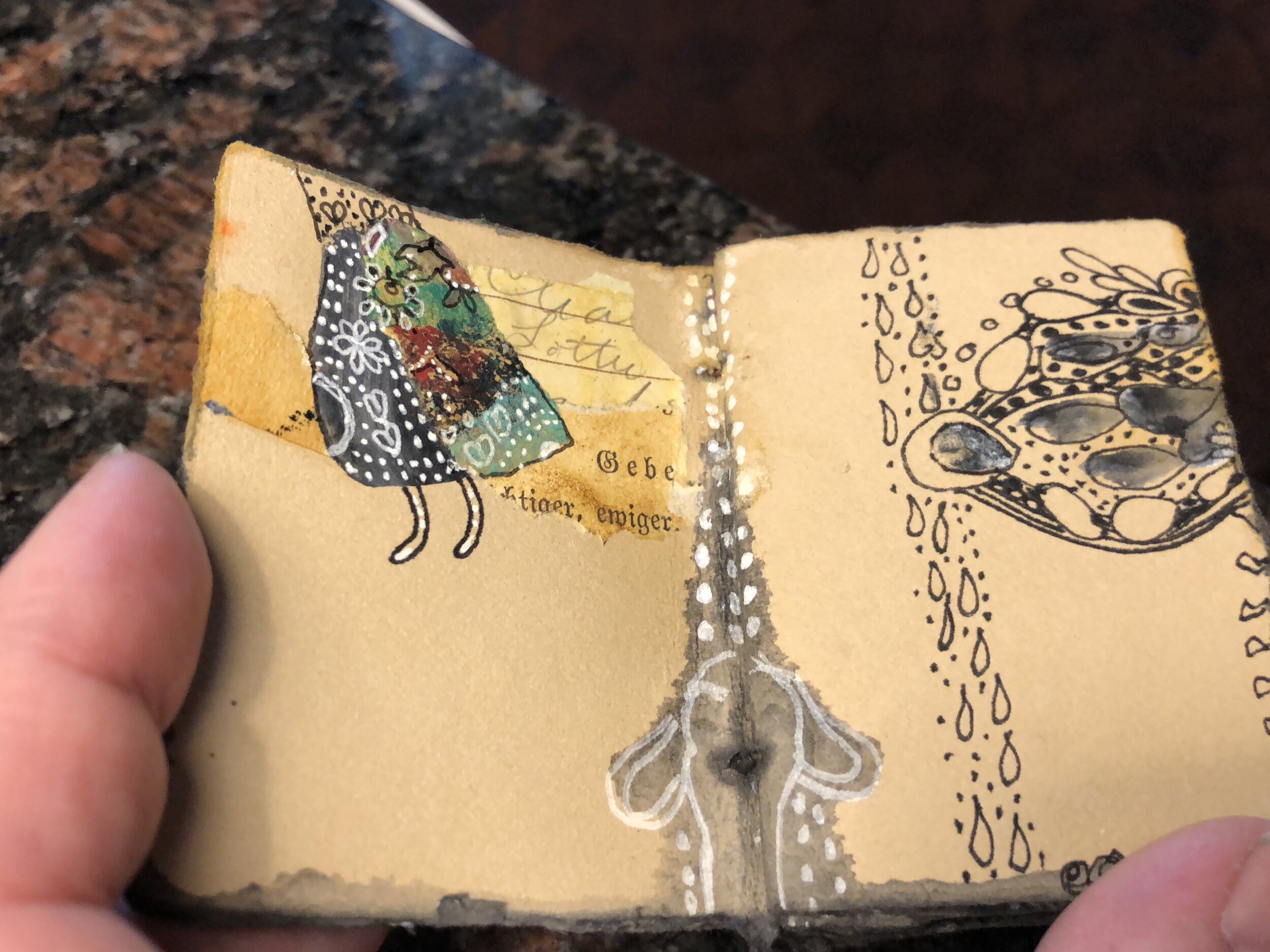Self portrait with i-Phone camera, ©2013Janet Hegman Shier
My research before I retired from teaching German was on interdisciplinary education and creativity. The groundbreaking work of Harvard’s Project Zero (on portfolio assessment, arts education, through-lines, and understanding) was critical both to my deliberate approaches to integrate the arts into the Foreign/Second language learning experience and to my ability to assess students’ performance of understanding.
Art was for me both the content and the context of my teaching. When I taught through visual arts, I did so as a means to help students access the language, culture, and German history. I mainly taught about the Blue Rider artists and “entartete Künstler” (so-called “degenerate artists”) whose art was banned by the Nazis. In order to bring art to life for my students, I had them make art (both in the US and on our study trips to Germany) so that they had a greater interest in the artists they were studying and looked more closely at their work. Making art also loosened them up and pushed them beyond their comfort zone. This is something that benefits anyone, who is learning a second language. The arts provided a good way to get students to engage, to talk with each other in German, and to boost students’ confidence—everyone brought something unique to the table.They learned not only more about what they were studying, but also about themselves.
After teaching for decades about the life and art of some of my favorite artists, like M. Beckmann, F. Marc, M. Chagall, V. Kandinsky, P. Klee, G. Münter, C. Salomon, and others, I began painting, myself. My first teacher was Canadian Artist, Kristyn Watterworth, who opened me up to experimentation and pushed me to keep going. That experience of having a teacher like Kristyn was transformative, and it gave me the confidence to do bolder experimentation (something I always encouraged my students to do!) with my art and my teaching. I now work every day with acrylics, graphite crayon and charcoal, and with ink, making large and small paintings on canvas, as well as small “fairy tale” paintings on various surfaces (e.g., cereal boxes, junk mail, business cards and tea bags). I often paint over earlier work because I love what happens to the finished painting (though, is anything ever really a “finished” painting?) when layers of the past peek through. Almost everything I paint reveals hidden worlds, full of surprises. I want the viewer to look more closely and find the stories. Many of my paintings show creatures looking. This all relates back to my work as a teacher, leading students to look closer at the language and culture and it parallels my objective to help students discover layers of history on study trips. Students learned that history can be found anywhere you look . . . but you do need to look!
Currently, I am working very small, making 3” by 3” paintings on recycled surfaces that are painted on both sides—these can be bound into miniature books or they can be easily framed. I like that these can be sent through the mail at a time when mailing a larger package via the post office can be challenging (due to the current Covid-19 situation). It is easy to send a small world to others and it may arrive just when they need it! All of my work is intuitive, and a message is often revealed to me only after I have completed a painting. Maybe that is why I paint. —Janet Hegman Shier
Please click through to see a sample of my work. Titles and info will appear if you hover over a painting. If you hold the cursor below the painting, the title will disappear.
Visit often. I will add more paintings soon.
